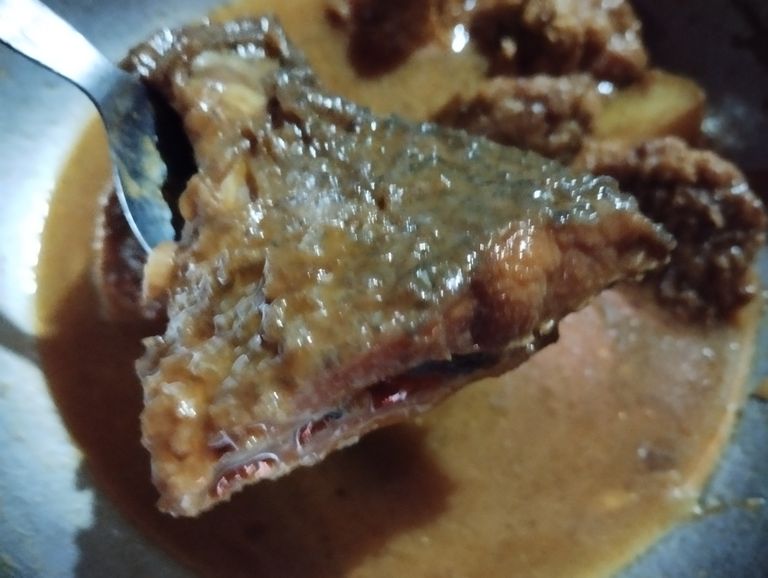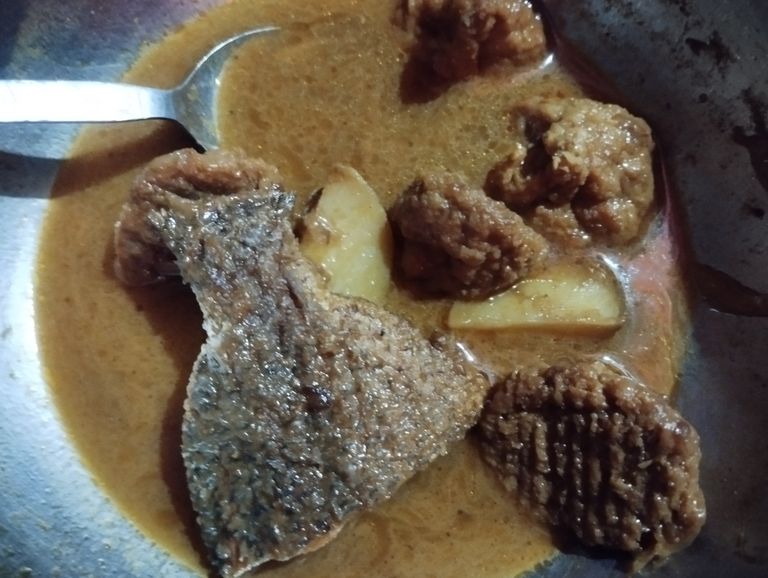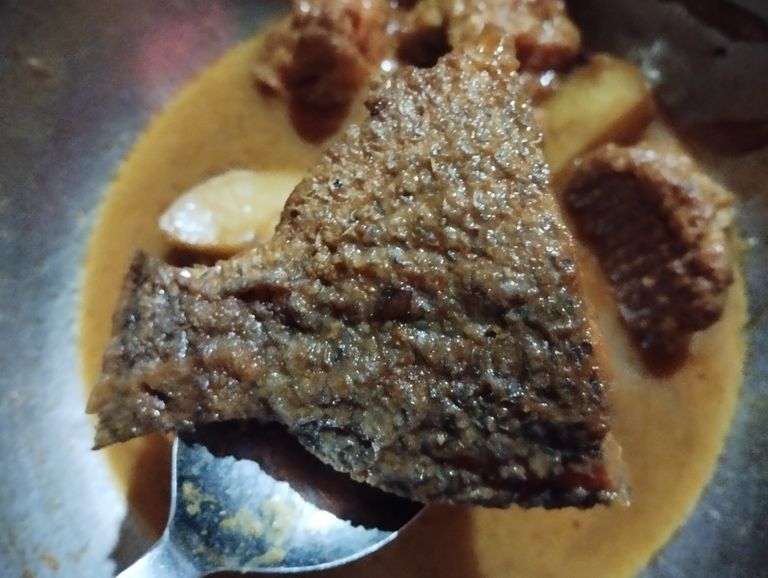
Tilapia Fish Curry Recipe A Traditional Delicacy.
Tilapia fish curry is a flavorful and easy-to-make dish that blends the richness of spices with the tender texture of fish. This traditional curry is perfect for serving with steamed rice or bread, making it an ideal meal for any occasion. In this blog, I will guide you step-by-step to prepare a delicious tilapia curry at home. Let’s dive into the recipe.
Ingredients
For this recipe, you will need the following ingredients:
For the fish marinade:
500g fresh tilapia fish (cleaned and cut into pieces)
1 teaspoon turmeric powder
1 teaspoon red chili powder
Salt to taste
2 tablespoons mustard oil (or vegetable oil)
For the curry:
2 medium-sized onions (finely chopped)
2 tomatoes (finely chopped or blended into a paste)
1 tablespoon ginger-garlic paste
2 green chilies (slit lengthwise)
1 cup coconut milk (optional, for a creamy texture)
1 teaspoon cumin seeds
2 bay leaves
1 teaspoon turmeric powder
1 teaspoon red chili powder (adjust to taste)
1 teaspoon coriander powder
½ teaspoon garam masala powder
2 cups water (adjust for desired consistency)
Salt to taste
Fresh coriander leaves (for garnish)
Instructions
Step 1: Marinate the Fish
- Clean the tilapia fish pieces thoroughly and pat them dry with a paper towel.
- In a mixing bowl, combine turmeric powder, red chili powder, and salt. Rub this mixture evenly over the fish pieces.
- Let the fish marinate for 15-20 minutes.
Step 2: Fry the Fish
- Heat mustard oil in a frying pan until it starts to smoke lightly. This helps reduce the pungency of mustard oil.
- Fry the marinated fish pieces on medium heat until golden brown on both sides. Remove from the pan and set aside.
Step 3: Prepare the Curry Base
- In the same pan, heat a little more oil if needed. Add cumin seeds and bay leaves. Sauté until aromatic.
- Add the chopped onions and cook until they turn golden brown.
- Stir in the ginger-garlic paste and cook until the raw smell disappears.
- Add the tomato paste or chopped tomatoes and cook until the oil separates from the mixture.
Step 4: Add the Spices
- Lower the heat and add turmeric powder, red chili powder, and coriander powder. Mix well to combine.
- If you prefer a richer curry, add coconut milk at this stage and mix thoroughly.
Step 5: Simmer the Curry
- Add water to the pan and bring the mixture to a boil. Adjust the consistency by adding more or less water as needed.
- Carefully place the fried fish pieces into the curry. Lower the heat and let it simmer for 8-10 minutes.
Step 6: Add Final Touches
- Sprinkle garam masala powder over the curry and stir gently to combine.
- Garnish with fresh coriander leaves and green chilies.
Serving Suggestions
Tilapia fish curry pairs wonderfully with:
Steamed basmati rice
Jeera rice (cumin-flavored rice)
Chapati or naan bread
Tips for the Perfect Tilapia Curry
- Always use fresh tilapia fish for the best flavor.
- Adjust the spice levels to your preference. For a milder curry, reduce the red chili powder.
- Adding coconut milk gives the curry a creamy texture, but you can skip it for a more traditional taste.
- Serve the curry hot to enjoy its full flavor.
Tilapia fish curry is a wholesome and comforting dish that’s loved by seafood enthusiasts around the world. The balance of spices and the tender fish make it a favorite for family meals or special occasions. Try this recipe today and bring the taste of tradition to your dining table.

Crispy Tilapia Fry Recipe: A Perfect Seafood Delight
Tilapia fish fry is a classic recipe that combines the rich flavors of spices with the crispy texture of perfectly fried fish. Whether served as a side dish, appetizer, or main course, it is loved for its simplicity and irresistible taste. In this blog, I will guide you step-by-step to make a delicious and crispy tilapia fry at home. Let’s get started!
Ingredients
Here’s what you’ll need to prepare crispy tilapia fry:
For the fish marinade:
4-5 tilapia fish fillets (or whole cleaned tilapia fish)
2 teaspoons turmeric powder
2 teaspoons red chili powder
1 teaspoon coriander powder
1 teaspoon cumin powder
1 teaspoon garlic paste
1 teaspoon ginger paste
1 teaspoon black pepper powder
1 tablespoon lemon juice
Salt to taste
For frying:
1 cup rice flour (or cornflour for extra crispiness)
½ cup semolina (optional, for added crunch)
½ cup oil (mustard oil, coconut oil, or vegetable oil)
Lemon wedges (for garnish)
Fresh coriander leaves (for garnish)
Step-by-Step Instructions
Step 1: Prepare the Fish
- Wash the tilapia fish thoroughly under running water. Pat them dry using a kitchen towel.
- If you’re using whole fish, make small slits on both sides to allow the marinade to penetrate better.
Step 2: Marinate the Fish
- In a mixing bowl, combine turmeric powder, red chili powder, coriander powder, cumin powder, garlic paste, ginger paste, black pepper powder, lemon juice, and salt. Mix well to form a thick paste.
- Rub this spice paste generously over the fish, ensuring all sides are well-coated.
- Cover the fish and let it marinate for at least 30 minutes (or up to 2 hours for deeper flavors).
Step 3: Prepare the Coating
- Mix rice flour and semolina in a plate. This will give the fish a crispy outer layer.
- Gently roll each marinated fish piece in the flour mixture, ensuring an even coating. Shake off any excess flour.
Step 4: Fry the Fish
- Heat oil in a heavy-bottomed pan or skillet over medium heat. Make sure the oil is hot enough but not smoking.
- Gently place the coated fish pieces in the hot oil. Fry in small batches to avoid overcrowding the pan.
- Cook each side for 3-5 minutes until golden brown and crispy. Flip carefully to avoid breaking the fish.
- Once done, remove the fish from the pan and place them on paper towels to drain excess oil.
Serving Suggestions
Crispy tilapia fry tastes best when served hot. Here are some ways to serve it:
- As an appetizer with mint chutney, tamarind sauce, or garlic mayonnaise.
- As a side dish with steamed rice and dal.
- With a salad of sliced onions, tomatoes, and cucumber for a light meal.
Tips for the Perfect Tilapia Fry
- Use fresh fish: Fresh tilapia ensures the best taste and texture.
- Marinate well: Allowing the fish to marinate enhances its flavor.
- Oil temperature: Ensure the oil is hot before frying to achieve crispiness without absorbing too much oil.
- Spices: Adjust the spice levels to suit your taste.
- Serve immediately: Tilapia fry tastes best when it’s fresh and hot.
Variations to Try
- South Indian Style Tilapia Fry: Add curry leaves, grated coconut, and crushed fennel seeds to the marinade for a unique flavor.
- Tandoori Tilapia Fry: Use tandoori masala, yogurt, and a dash of mustard oil in the marinade.
- Pan-Seared Tilapia: Skip the flour coating and fry the fish in less oil for a healthier option.
Health Benefits of Tilapia Fish
- High in Protein: Tilapia is an excellent source of lean protein, making it ideal for a healthy diet.
- Rich in Omega-3 Fatty Acids: It promotes heart health and reduces inflammation.
- Low in Calories: Tilapia is a low-calorie option, perfect for weight-conscious individuals.
- Loaded with Vitamins and Minerals: It provides essential nutrients like vitamin D, selenium, and potassium.
Why You’ll Love This Recipe
- Quick and Easy: With minimal ingredients and effort, you can prepare a restaurant-style dish at home.
- Customizable: You can adjust the spices and flavors to suit your palate.
- Crispy Perfection: The rice flour and semolina coating ensures a crunchy texture every time.
- Versatile: Serve it as an appetizer, side dish, or main course.
Crispy tilapia fry is a delightful recipe that is sure to impress your family and guests. Its rich flavors and crunchy texture make it a crowd-pleaser, whether for a casual meal or a festive gathering. Follow this easy recipe, and you’ll have a plate of golden, crispy fish ready to enjoy.

A Comprehensive Guide to Fish Farming
Fish farming, also known as aquaculture, is one of the most promising sectors in agriculture today. With the increasing demand for fish as a source of protein, fish farming has become a lucrative business opportunity for entrepreneurs and farmers alike. This blog explores the essentials of fish farming, including its benefits, methods, and best practices for sustainable aquaculture.
Why Fish Farming?
Fish farming has gained popularity for several reasons:
- High Demand: Fish is a healthy source of protein, rich in omega-3 fatty acids, vitamins, and minerals. With a growing global population, the demand for fish continues to rise.
- Sustainable Income: Fish farming provides a steady source of income for farmers, especially in rural areas.
- Efficient Resource Use: Compared to livestock, fish farming requires less land and water.
- Environmental Benefits: Properly managed fish farms can reduce overfishing in natural water bodies, helping to preserve marine ecosystems.
Types of Fish Farming
Fish farming can be broadly categorized into the following methods:
- Pond Culture:
The most traditional and common method.
Fish are raised in earthen ponds, which provide a natural habitat.
Suitable for freshwater fish like carp, tilapia, and catfish.
- Cage Farming:
Involves placing cages in natural water bodies such as rivers, lakes, or oceans.
Allows efficient monitoring and feeding of fish.
Common for species like salmon and trout.
- Recirculating Aquaculture Systems (RAS):
Uses tanks and advanced filtration systems to recycle water.
Ideal for urban areas with limited water resources.
Allows year-round production of high-value species.
- Integrated Fish Farming:
Combines fish farming with other agricultural activities like poultry or crop farming.
Enhances resource efficiency and reduces waste.
- Mariculture:
Focuses on farming marine species like shrimp, oysters, and seaweed.
Conducted in ocean environments or artificial saltwater systems.
Steps to Start Fish Farming
- Research and Planning:
Understand market demand and the types of fish suitable for your region.
Learn about the required permits and regulations.
- Selecting a Location:
Choose a site with good water quality and accessibility.
Ensure the area is free from pollutants and extreme weather conditions.
- Pond or Tank Construction:
Build ponds or tanks according to the species being farmed.
Install aeration systems for proper oxygen supply.
- Stocking:
Source healthy fingerlings or juveniles from reputable hatcheries.
Stock the fish at appropriate densities to prevent overcrowding.
- Feeding and Maintenance:
Provide nutritionally balanced feed based on the species' requirements.
Regularly monitor water quality, oxygen levels, and fish health.
- Harvesting and Marketing:
Harvest fish when they reach marketable size.
Develop a marketing strategy to sell your produce locally or regionally.
Common Challenges in Fish Farming
- Water Quality Issues:
Poor water quality can lead to disease outbreaks and reduced growth rates.
Regular testing and maintenance are essential.
- Diseases and Parasites:
Use preventive measures like vaccination and biosecurity protocols.
Quarantine new stock before introducing them into the farm.
- Market Competition:
Research market trends to stay competitive.
Focus on high-quality production and branding.
- Environmental Concerns:
Avoid overuse of chemicals and ensure waste management to minimize environmental impact.
Tips for Sustainable Fish Farming
- Opt for Eco-Friendly Practices:
Use organic feed and avoid overfeeding.
Practice crop rotation or integrate with other farming systems.
- Efficient Resource Management:
Recycle water in closed systems like RAS.
Utilize fish waste as fertilizer for crops.
- Focus on Biodiversity:
Diversify fish species to reduce risks and enhance farm productivity.
- Leverage Technology:
Use automated feeding systems and sensors to monitor water quality.
Adopt artificial intelligence and data analytics for better decision-making.
Profitable Fish Species for Farming
- Freshwater Species:
Tilapia: Hardy and fast-growing.
Catfish: High demand and easy to farm.
Carp: Popular in Asia and Europe.
- Marine Species:
Shrimp: High export value.
Salmon: Premium market demand.
Sea Bass: Suitable for cage farming.
- Specialty Species:
Ornamental fish like koi and guppies.
Eel and frog farming for niche markets.
Fish farming is a rewarding venture with immense potential for growth and profitability. By following best practices and adopting sustainable methods, farmers can contribute to food security, economic development, and environmental conservation. Whether you’re a beginner or an experienced farmer, aquaculture offers opportunities to make a positive impact while achieving financial success.

Tilapia Fingerlings: A Complete Guide to Rearing and Management
Tilapia farming has become an essential part of aquaculture globally due to the fish's adaptability, fast growth rate, and high market demand. One of the most crucial aspects of tilapia farming is the production and management of fingerlings. In this blog, we will explore the process of cultivating healthy tilapia fingerlings, their care, and the factors that contribute to a successful venture.
What Are Tilapia Fingerlings?
Tilapia fingerlings are the young fish that have grown from the hatchling stage to a size suitable for further growth in grow-out systems. Typically, they are about 2-3 inches in length and are the foundation of a productive tilapia farming operation. Ensuring the quality of fingerlings is key to achieving high yields and profitability.
Advantages of Raising Tilapia Fingerlings
- Rapid Growth Rate: Tilapia fingerlings grow quickly under proper conditions.
- High Survival Rate: With appropriate care, fingerlings exhibit a strong resilience to diseases and environmental stress.
- Market Demand: The demand for tilapia is growing globally, ensuring good returns.
- Adaptability: Tilapia can thrive in a variety of environments, making them an excellent choice for fish farming.
Breeding Tilapia for Fingerlings
Breeding is the first step in obtaining fingerlings. Here's how it works:
- Selecting Breeders: Choose healthy, mature tilapia (male and female) weighing around 300-500 grams.
- Breeding Tanks: Use separate breeding tanks with optimal water quality and temperature (28-30°C).
- Natural Spawning: Female tilapia lay eggs in nests, and males fertilize them. The eggs are then incubated in the female’s mouth.
- Egg Collection: Some farmers collect eggs from the females to incubate them artificially in controlled environments.
Hatching and Early Care
- Hatching Tanks: Use specialized hatching tanks with aeration and a temperature-controlled environment.
- Feeding: Provide finely ground fish feed or commercially available fry feed. Feeding should be frequent, up to 4-5 times a day.
- Monitoring: Maintain consistent water quality by ensuring pH levels between 6.5-7.5 and dissolved oxygen above 5 ppm.
Nursery Management
After the fry stage, fingerlings are transferred to nursery ponds for further growth:
- Stocking Density: Maintain a stocking density of 10-20 fry per square meter to avoid overcrowding.
- Feeding: Feed high-protein pellets (30-35% protein) to support rapid growth.
- Water Quality Management: Regularly monitor and manage ammonia, nitrate, and dissolved oxygen levels to keep them within acceptable ranges.
- Predator Control: Use nets or screens to protect fingerlings from predators.
Challenges in Raising Tilapia Fingerlings
- Water Quality Issues: Poor water quality can lead to diseases and high mortality rates.
- Overcrowding: High stocking density increases stress and competition for resources.
- Diseases: Common diseases include bacterial infections and parasitic infestations. Regular health checks and prophylactic treatments can help.
- Feeding Errors: Underfeeding or overfeeding can adversely affect growth and water quality.
Economic Benefits of Raising Tilapia Fingerlings
- High Market Value: Selling healthy fingerlings can be a lucrative business.
- Reduced Production Costs: Farmers can rear their own fingerlings instead of purchasing them.
- Sustainable Farming: Ensuring a steady supply of fingerlings helps maintain the sustainability of tilapia farming operations.
Raising tilapia fingerlings is a rewarding aspect of aquaculture, offering farmers the opportunity to enhance productivity and profitability. By focusing on quality breeding, nursery management, and disease control, farmers can ensure a steady supply of robust fingerlings for grow-out operations. With proper care and management, tilapia farming can become a sustainable and lucrative venture for small and large-scale farmers alike.